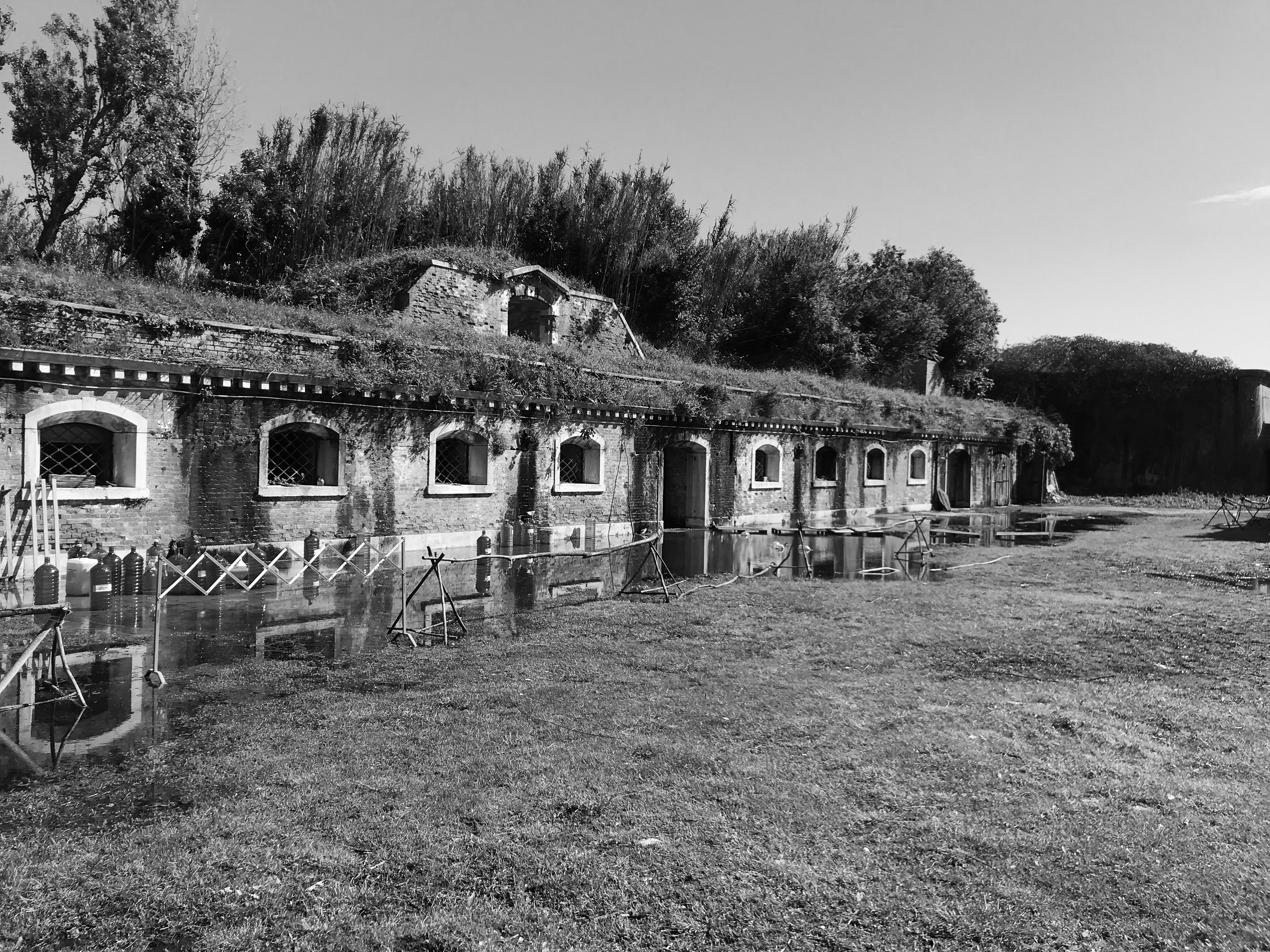Clean(se) —
Bath at the Batteria
IUAV, Venice, Winter 2019The project is set up in the historical site of the Batteria Ca’Bianca and the fort Emo. The military magazine was built in the middle of the 1800’s by the Austro-Hungarian empire in Lido, strategically located between the Venetian lagoon and the Adriatic Sea. Once unified in 1876, Italy reclaimed this military area, and arms it further. With the development of more advanced, more destructive and therefore heavier artillery, the existent battery made in red brick is no longer suitable at the turn of the 20th century and a new defense structure is built: the EMO fort topped by two giant cannons, which were also used by the Germans during the second world war. The brief German military presence also led to the construction of two bunkers on this site, amongst the many found all over the Venetian lagoon

The project takes on the form of an installation in one of the abandoned houses on the site, allegedly the commander’s house. The installation consists of an intervention in one of the most intimate spaces of the domestic realm: the bathroom. The bathtub full of water and foam surrounded by all the necessary toiletry, is an explicit invitation to clean and perhaps cleanse oneself. This restored corner of the bathroom, only standing piece of architecture in an otherwise desolate military dwelling, and theater of domestic life, takes on a whole new meaning.


Collective Intimacy
The visual, olfactive, and auditive queues create a multi-sensorial experience that each one of us can relate to for its simplicity and triviality. The piano soundtrack emphasizes the stillness of the moment, and create a bubble of introspection: the musical masterpiece appeals to our universal capacity to appreciate absolute beauty. The intimacy of the moment, and the music are as many elements to connect simultaneously with the other spectators and the subject taking a bath. Where is the protagonist? How did the mirror break? Why has a glass full of red wine dropped on the floor? The spectator thrown suddenly into a voyeuristic setting, will be urged to imagine their own story to make sense of it, triggering their ability to empathize, and perhaps generate a new set of memories linked to this place.
Re-appropriation of memory
Does cleaning one’s exteriority help redeem one’s interiority? This question not only applies to a human subject, from the spectator of this artwork, to the former occupant of the house, but also to the architectural space, restored for that purpose. The central theme of the proposed work is the (im)possibility of re-appropriating places of crime, war and trauma and their memories, into spaces as reassuring and safe as our own homes. Therefore, the artwork serves as a mere catalyst to the viewer’s introspective contemplation.